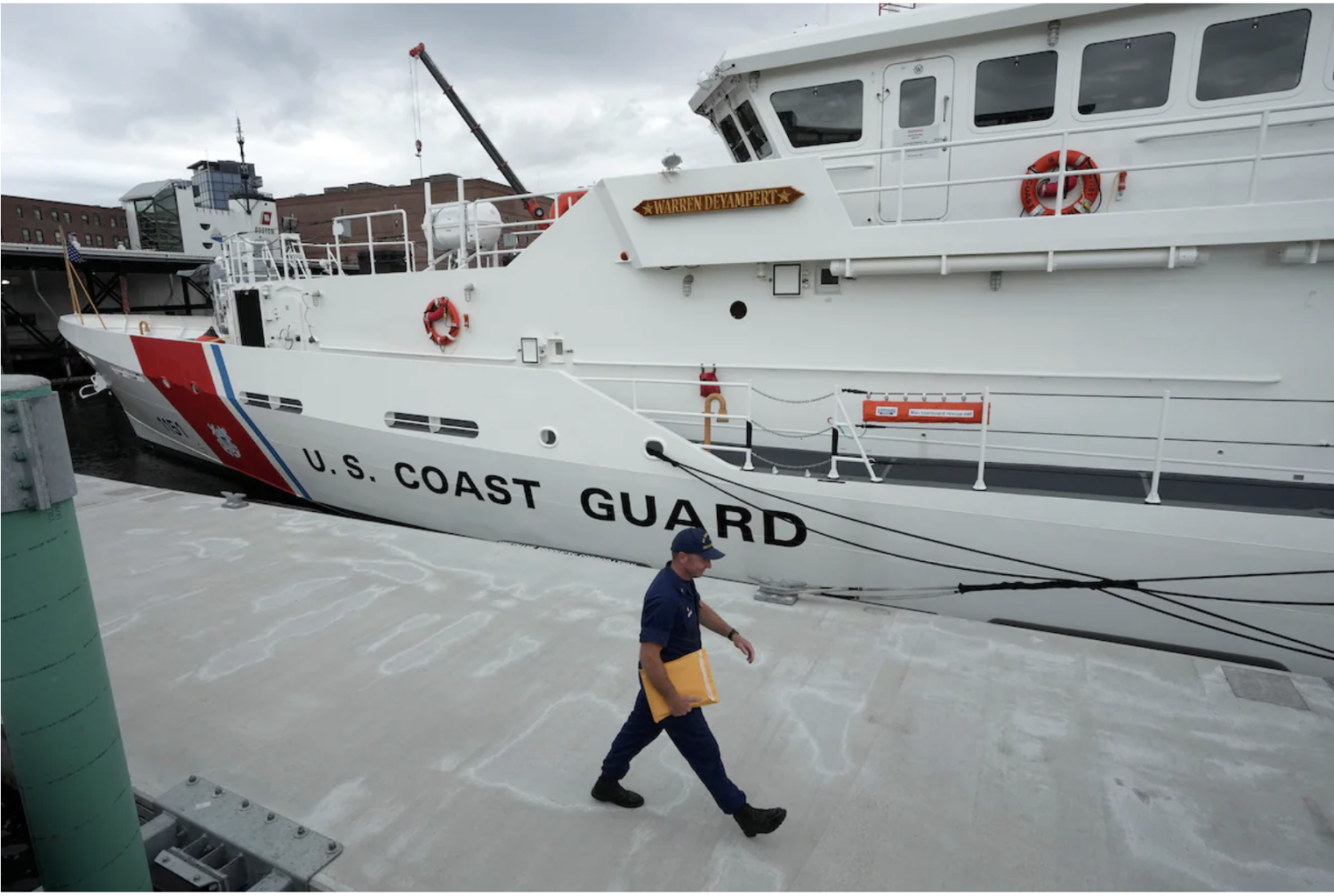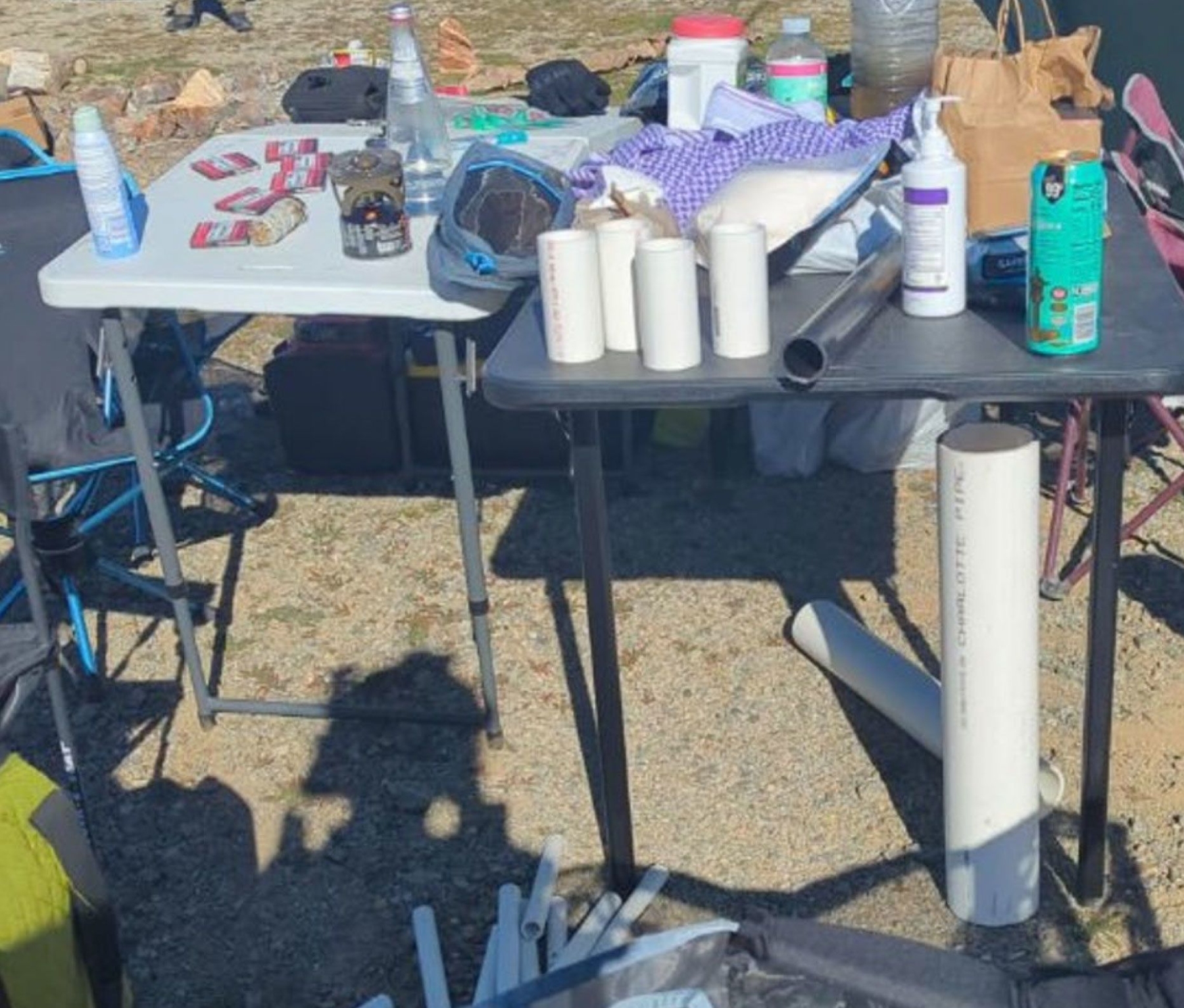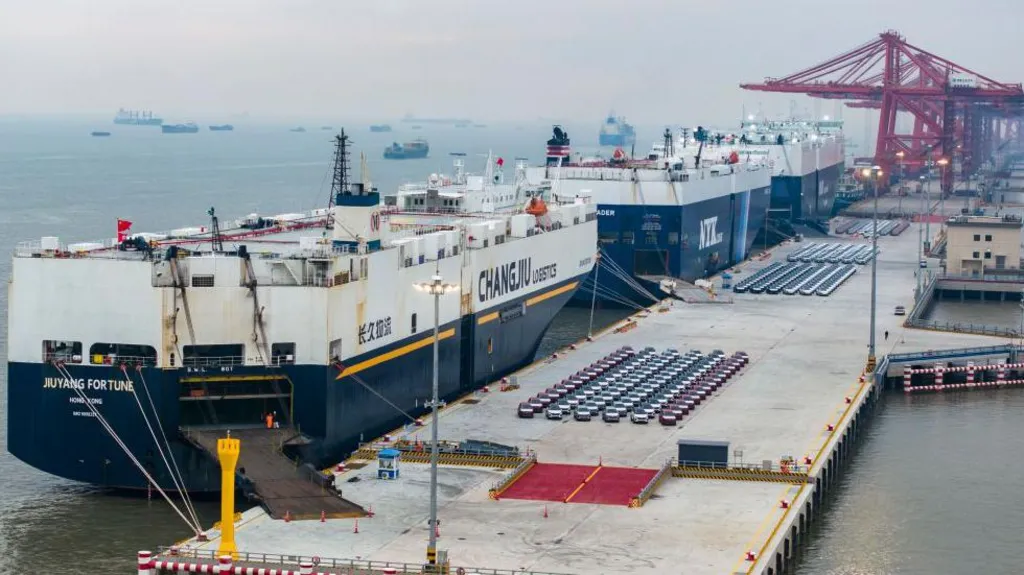
This article is more than
2 year oldUnderwater noises detected during search for missing submersible

The Coast Guard’s First District reported early Wednesday that a Canadian P-3 aircraft detected underwater noises in the area where crews are looking for the missing Titan submersible and operations were redirected there. Those efforts “have yielded negative results but continue,” the Coast Guard tweeted.
Crews are searching a massive swath of sea about 900 miles east of Boston, with time running out on the oxygen supply aboard the missing submersible that was set for the ocean floor wreckage of the Titanic.
The submersible, named the Titan, and its four passengers and pilot have been unaccounted for since it lost contact with the Canadian research vessel Polar Prince during a dive Sunday morning. Created by OceanGate Expeditions, the 22-foot vessel was being piloted by OceanGate CEO Stockton Rush toward the world’s most famous unsinkable ship that sank in the North Atlantic.
Coast Guard officials said Tuesday afternoon that the vessel had enough oxygen to last until Thursday morning.
The Navy dispatched a system — the Flyaway Deep Ocean Salvage System — designed to haul up objects the size of planes and small vessels from the deep ocean floor, a spokesperson said, but it isn’t clear whether the backing band of other specialized technology required to operate is available.
The U.S. Coast Guard, U.S. Navy, Canadian Coast Guard and OceanGate Expeditions have established a unified command, the U.S. Coast Guard said in a statement on Tuesday, and more search vessels were still on their way, including a Canadian vessel with a mobile decompression chamber and medical personnel.
The other four men aboard are British aviation businessman Hamish Harding, French diver and longtime Titanic explorer Paul-Henri Nargeolet, British-Pakistani businessman Shahzada Dawood and his 19-year-old son Suleman.
The company creates crewed submersible vessels that reach the ocean floor. OceanGate in July 2021 announced that its Titan submersible first dove 3,800 meters (or about 12,500 feet) to the site of Titanic wreckage.
Much like the current trip, the first Titan trip was piloted by OceanGate’s Rush, and Nargeolet was aboard.
“This recent dive in Titan to the Titanic wreck site is one of the most memorable dives I have ever done,” Nargeolet said at the time.
The only vessel of its kind
OceanGate’s Titan uses a titanium and carbon fiber design for its pressure vessel, which carries people to the wreck of the Titanic, about 2.5 miles below the ocean's surface.
The 22,000-pound Titan can travel at a speed of three knots and can support a crew of five for 96 hours, according to an OceanGate document.
Rush founded OceanGate in 2009 to further deep-sea exploration. Less than 10 percent of the global ocean is mapped using modern sonar, according to the National Ocean Service.
Maham Javaid contributed to this report.




